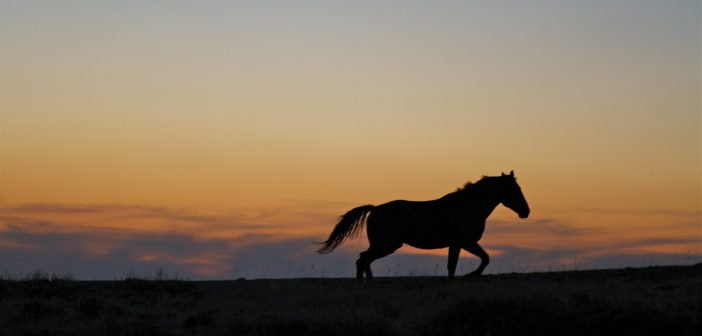Throughout American history, the cattle industry has been for the most part unreasonable to other livestock producers. The American range and Sheep Wars of the 18th and early 19th centuries are clear evidence of this, as outlined in this Wikipedia summary:
The Sheep Wars, or the Sheep and Cattle Wars, refers to a series of armed conflicts in the Western United States which were fought between sheepmen and cattlemen over grazing rights. Sheep wars occurred in many western states though they were most common in Texas, Arizona and the border region of Wyoming and Colorado. Generally, the cattlemen saw the sheepherders as invaders, who destroyed the public grazing lands, which they had to share on a first-come, first-served basis. Between 1870 and 1920, approximately 120 engagements occurred in eight different states or territories. At least 54 men were killed and some 50,000 to over 100,000 sheep were slaughtered.
Common tools used by the cattle industry to push competing grazing animals off the lands they covet are supporting outright lies and funding questionably designed studies and then promoting the highly questionable results. Over the last century, this has led to the demonization of grazing animals who compete with cattle for forage on public lands. Sadly, the resulting myths still permeate common knowledge in society today. This is tragic from the standpoint that, in order to manage any grazing animal, including wild or domestic herbivores, a clear and precise understanding of each animal’s behavioral ecology is critical.
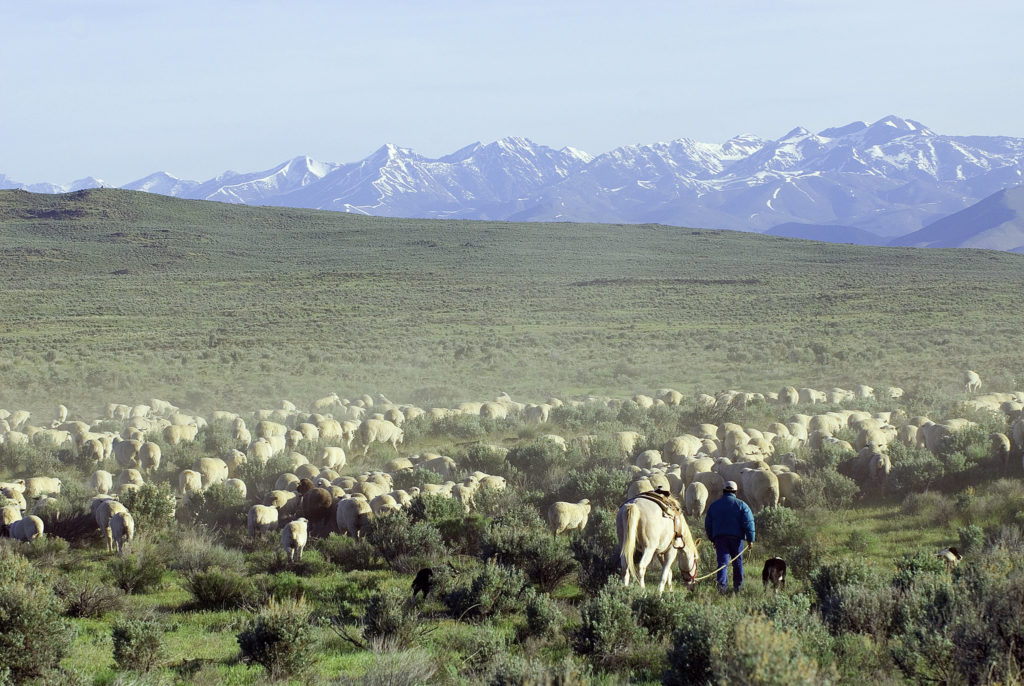
Sheep move through public lands near Shoshone, Idaho. Image credit Bureau of Land Management, CC BY-SA 3.0.
These days most grazing herbivores, wild or domestic, have lobbies based on an economic interest. The economic value of cattle, sheep and pigs are obvious, due to the market demands for these animals as human food sources. Not quite as obvious are the economics that support many wild animals, such as deer and elk for instance, who have economic value to the hunting industry as ‘game animals.’ On the other hand, wildlife who are not seen as game animals, such as wild horses, have no such economic value placed upon them.
Below we examine the three greatest myths that the cattle industry has perpetrated regarding America’s wild horses. These myths were relatively easily perpetrated during the time that predated the Internet, when advanced scientific information was available via relatively few and obscure resources. Today the information is available for those who are willing to spend a little time to conduct some research and due diligence.
Myth One: Wild horses are not a native species in North America.
Fossil records say no; wild horses are a native species.
Today, with the prolific publication of paleontological records of wild horses in North America and the well documented horse fossil record on the North American continent (horse fossils exist in many states), the evidence is compelling: they are native. In fact, all horses on the planet today originated from North America and migrated over the Aleutian land bridge into Asia sometime around 17,000 years ago.
Dr. Ross MacPhee, curator of vertebrates at the American Museum of Natural History, has criticized the BLM (Bureau of Land Management) for publishing manifestly incorrect information for public viewing on their wild burro and horse website.
Furthermore, according to Professors Kirkpatrick and Fazio, in their article Wild Horses as Native North American Wildlife: “The issue of feralization and the use of the word ‘feral’ is a human construct that has little biological meaning except in transitory behavior, usually forced on the animal in some manner. Consider this parallel. E. przewalskii (Mongolian wild horses) disappeared from Mongolia a hundred years ago. It has survived since then in zoos. That is not domestication in the classic sense, but it is captivity, with keepers providing food and veterinarians providing health care. Then they were released during the 1990s and now repopulate their native range in Mongolia. Are they a reintroduced native species or not? And what is the difference between them and E. caballus in North America, except for the time frame and degree of captivity?”
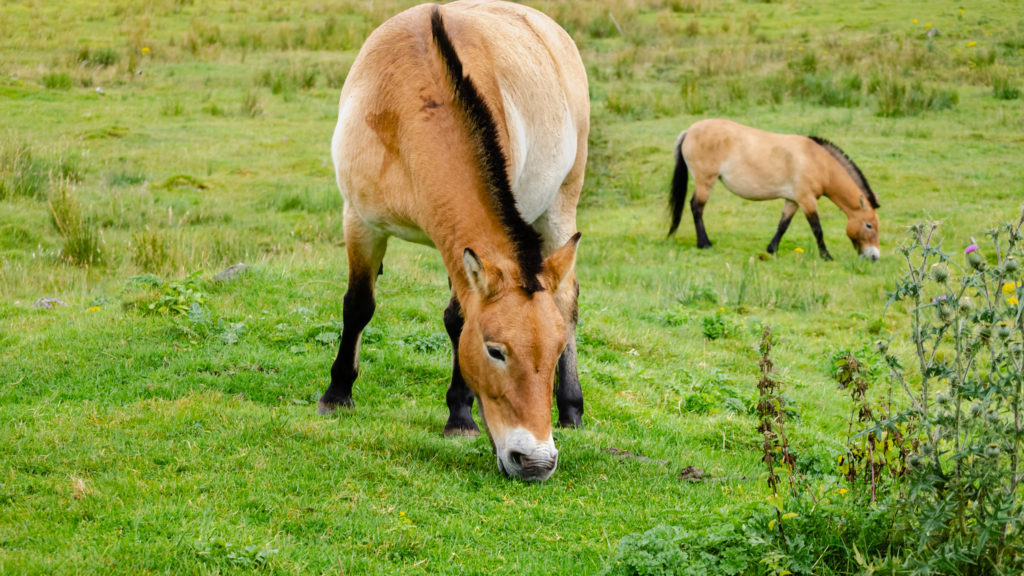
Mongolian wild horses (E. przewalskii) are considered wild despite a period of existing only in captivity. How are American wild horses so different? Image credit Stephen Lavery, CC BY-SA 3.0.
Cultural archaeological records say no; wild horses are native and did not go extinct in America.
Some interesting studies have recently brought to light important details from the journals of the French explorers who had penetrated more deeply into the North American continent than any other explorers as of the early 16th century. They had in fact made contact with the Lakota Indians, who resided on the plains that stretched between the Mississippi River and the Rocky Mountains, and observed them riding horses and hunting buffalo using methods and tools (evolved spear designs) that were advanced at that place and time. The journals of these explorer-cartographers are now being studied from their secure locations in museums, where scientists have uncovered illuminating revelations of wild horses being tamed and ridden for centuries in America before the arrival of French explorers in the early 1600s, thus predating the arrival of any Spaniards and even the Vikings on the North American continent.
The clear implication is that the Lakota tribes had been taming and using wild horses for buffalo hunting for at least several hundred years before the arrival of Spaniards and the re-introduction of their horses to America. Here is an interesting study that details some of these facts.
Molecular biology and genetics say no; the DNA doesn’t lie, wild horses today are descended from the Yukon horse (E. lambei).
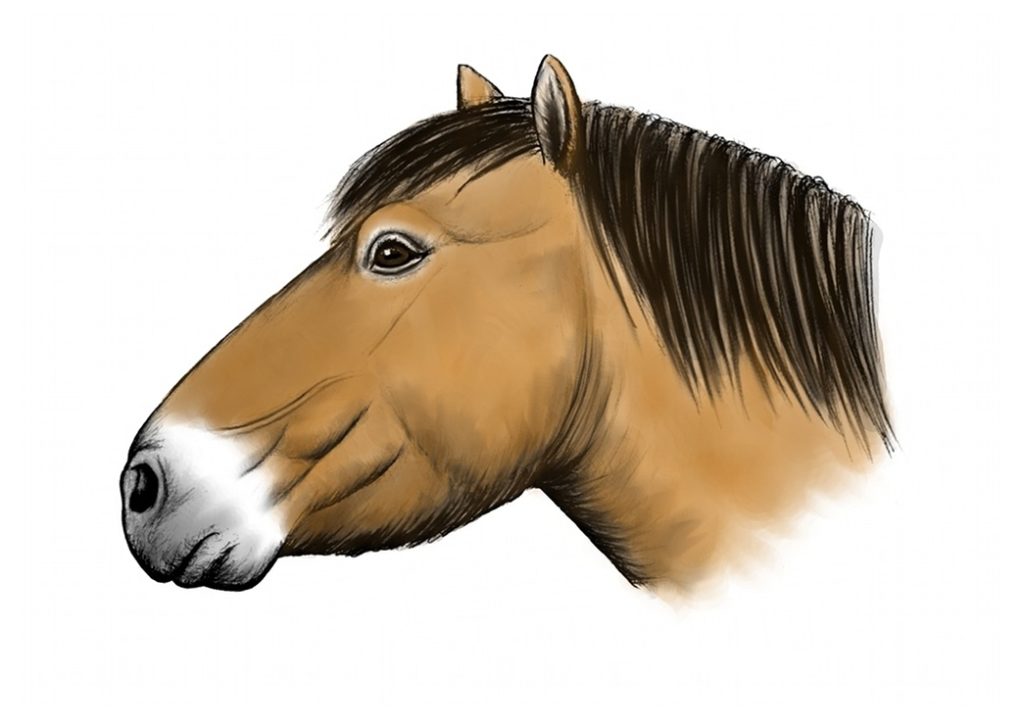
A reconstruction of a Yukon horse (E. lambei) based on a skull. Image credit DFoidl, CC BY-SA 3.0.
In the field of Molecular Biology there are new studies that point to the conclusion that the wild horses in America today are a native species. This article discusses that subject in depth, and in short states: “The work of Michael Hofreiter examining the genetics of the so‐called E. lambei from the permafrost of Alaska, found that the variation was within that of modern horses, which translates into E. lambei actually being E. caballus, genetically.” Thus, as Hofreiter adds, “the molecular biology evidence is incontrovertible and indisputable, and is also supported by the interpretation of the fossil record, as well.”
Myth Two: Wild horses compete for the same foods that depleted deer populations need.
Another fallacy common among hunters is that wild horses deprive deer and elk of their preferred grazing choices in the wild.
A study by Hansen, Clark and Lawhorn titled Foods of Wild Horses, Deer and Cattle in the Douglas Mountain Areas, Colorado shows that wild horses do not adversely compete with deer for food. The key statement in this study reads: “[results]show a strong potential for competition between wild horses and cattle, but little potential conflict between mule deer and the other two herbivores [horses and cattle].”
Black tail deer in western coastal areas similarly have little potential for grazing competition with wild horses. Wildlife biologists characterize the grazing adaptation shared between wild horses and cervids (the deer family) as being ‘commensal,’ meaning they essentially eat from the same table without competing.
Myth Three: Wild horses damage North American range and riparian areas.
Arguably one of the cattle industry’s favorite whoppers is that wild horses damage range and riparian lands.
Cattle require intensive management to minimize the extensive damage they do to pastures, especially wetlands and riparian areas. The fact is that cattle are an invasive species imported onto the North American continent by settlers as early as the very end of the 15th century, and certainly to the Americas by the first part of the 16th century from Africa. It is important to note that there are no cattle fossils anywhere to be found on the North American continent. It is also important to note that cattle have an evolutionary adaptive hoof design that arguably provides extra traction in wetlands, which are their preferred homesteads in a native ecosystem.
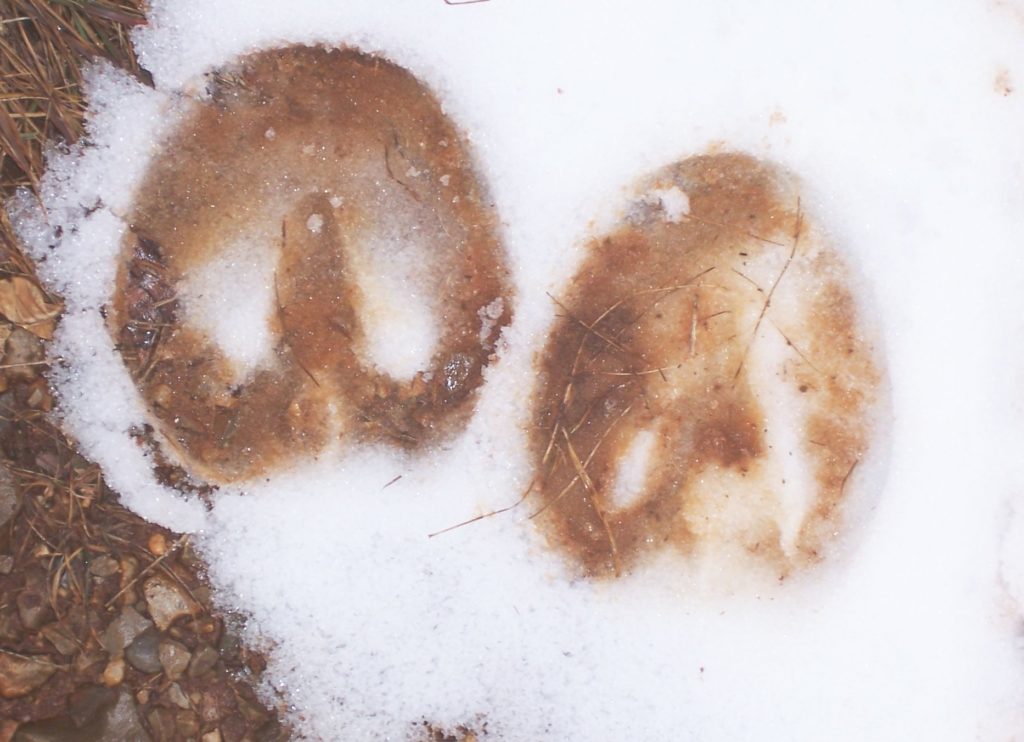
The horse’s round hoof design allows it to ‘float’ hydraulically on the soil surface. Image credit Alex Brollo, CC BY-SA 3.0.
More detailed information and photos about the different evolutionary adaptations of cattle and equid (horse) hooves and the impacts of those differently evolved hooves on the ranges and wetlands can be found here.
Another ecological downside to cattle is their multi-stomach ruminant digestive system, which is quite effective at digesting most of the plant and grass seeds they consume when grazing native pastures, rending those seeds non-viable and thereby eliminating the natural reseeding process of the plants and grasses consumed.
Wild horses, on the other hand, have a very simple single stomach gastric system, which passes most of the seeds they consume intact and viable back onto the pastures they graze, thereby effectively reseeding the pastures. This is without doubt an example of symbiotic mutualism, meaning that both species (the horses and the plants they eat) have evolved together in a mutually beneficial relationship. Plants and grasses provide sustenance for the wild horses, and in turn the horses provide a reseeding mechanism via their droppings, which also contain nutrients valuable to the seeds when they germinate.
Wild horses have many other mutualisms within the ecosystems of the American landscapes they inhabit, including with trees, which they adopt as their means of shelter from the heat of summer and rains and snows of winter. In return, wild horses graze down all of the grasses and plants under the trees, thus removing fuel for wildfires. They also use the trees for scratching, and due to their height and body mass, are able to break-off low-hanging branches, known as fire ladders for their tendency to help wildfires spread into trees. These branches are subsequently broken up on the ground by the hooves of the horses as they decompose, which along with the nutrients from the horse’s droppings build humus and nutrient-rich soils under the trees. The results of this mutualism is that the trees are made more fire resilient. In fact, wild horses grazing in and around forests will create ‘natural’ fire-breaks, which changes the characteristics of wildfires in a manner that benefits the forests.
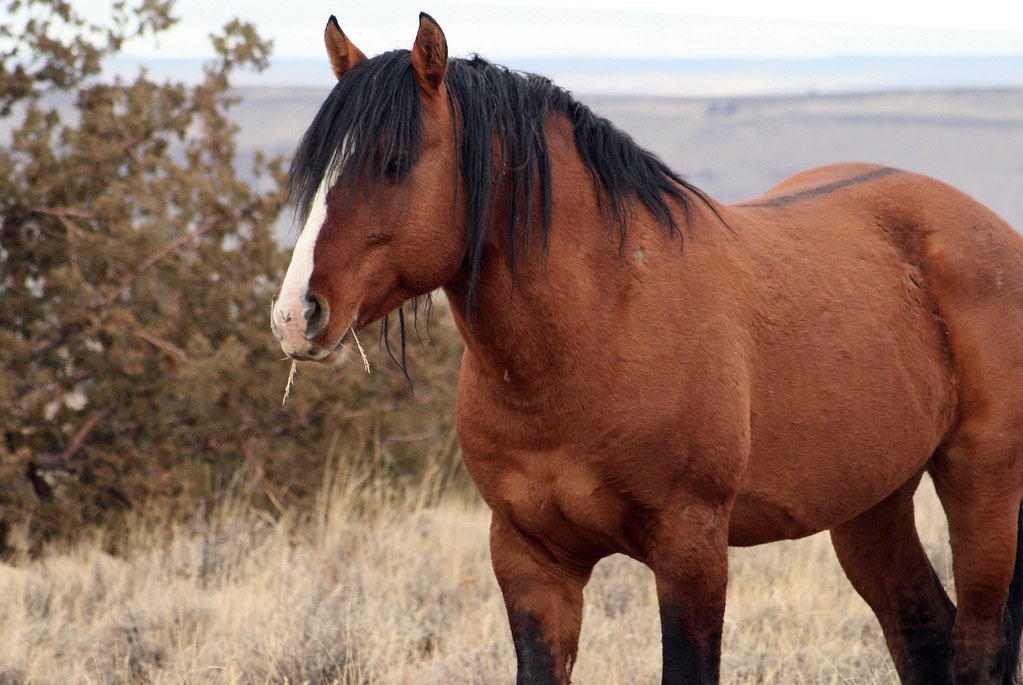
A wild horse in Oregon. Wild horses have a symbiotic relationship with the grasses they graze on, as well as other plants. Image credit Dan Dzurisin, CC BY-SA 3.0.
As we consider the foregoing points, it becomes strikingly obvious that millennia of evolutionary processes have led to complex mutualisms between plants, grasses and wild horses. This perfectly adapted symbiosis cannot be duplicated by any animal which has evolved in ecosystems on other continents, such as cattle from genetic lines that evolved in Africa.
It’s a sham for any scientist to disparage or minimize the intrinsic value of wild horses to American ecosystems.
The cattle industry attempts to paint wild horses as a current problem on public lands by stating they are damaging to rangelands. But it is well-known that cattle and sheep operations have wreaked more havoc on US rangelands than all other species combined over the past 5000 years, as stated by Professor Thomas L. Fleischner: “The most severe vegetation changes of the last 5400 years occurred during the past 200 years. The nature and timing of these changes suggest that they were primarily caused by 19th-century open-land sheep and cattle ranching.”
So as we can now see, the cattle industry and others who repeat these myths and false narratives have done and continue to do a grave injustice to the reputation and the natural history of America’s wild horses, which have been a great blessing to mankind, literally a gift from the Creator. America was built on the backs of horses; where would we all be today without their mutualism with man?
Featured image: the silhouette of a wild horse in Wyoming. Image credit carfull…in Wyoming, CC BY-SA 3.0.

